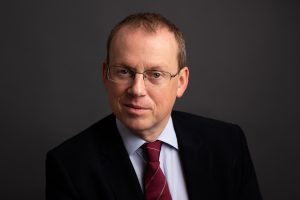31 October 2019–The Earthquake Engineering Research Institute (EERI) and the Seismological Society of America (SSA) are pleased to announce that Julian J. Bommer, a Senior Research Investigator at Imperial College London, is the 2020 recipient of the William B. Joyner Lecture Award.
Bommer will deliver the Joyner Lecture at the EERI 2020 Annual Meeting and National Earthquake Conference to be held 4-6 March 2020 in San Diego, California, and the 2020 SSA Annual Meeting to be held 27-30 April 2020 in Albuquerque, New Mexico.

The lectureship is jointly awarded by EERI and SSA to those who have provided outstanding earth science contributions to the theory and practice of earthquake engineering or outstanding earthquake engineering contributions to the direction and focus of earth science research—together with demonstrated skills of communication at the interface of earthquake science and earthquake engineering.
The lecture honors the distinguished career of William B. Joyner at the U.S. Geological Survey and his abiding commitment to continuing communication and education at the interface between research findings of earthquake science and the practical realities of earthquake engineering.
Bommer has worked for more than 30 years at the interface between seismology and earthquake engineering as both a researcher and practitioner. A Fellow of the UK Institution of Civil Engineering, he obtained a Ph.D. in Engineering Seismology under the supervision of Professor Nick Ambraseys, who encouraged him to undertake field investigations of earthquakes. Bommer’s first field reconnaissance was of the earthquake that struck the capital of El Salvador in October 1986, and he has since participated in fieldwork in Armenia, Colombia, Italy, Greece, Japan, Mozambique, Peru and Turkey. From 1993 to 1994 Bommer returned to live in El Salvador where he worked at two universities, introducing engineering seismology into the civil engineering curriculum and installing an accelerograph network funded by the European Union. He returned to the United Kingdom to take up a faculty position at Imperial College London where he became Professor of Earthquake Risk Assessment. His research has focused on ground-motion prediction and seismic hazard and risk assessment, topics on which he has published more than 130 journal papers that have been widely cited.
In 2011 Bommer moved to a part-time appointment as a Senior Research Investigator at Imperial College London in order to focus more time on consultancy. He has worked on seismic hazard and design inputs for major engineering projects worldwide, including dams, bridges and pipelines, as well as serving on the Seismic Advisory Board for the Panama Canal expansion. A major focus of his work has been seismic hazard assessments for nuclear facilities, working for the Office for Nuclear Regulation in the UK as well as contributing to the Senior Seismic Hazard Analysis Committee (SSHAC) implementation guidelines for the U.S. Nuclear Regulatory Commission. He has consulted on projects for nuclear sites in Abu Dhabi, Brazil, Romania, South Africa, Spain, Switzerland and the United States. Bommer also works extensively on hazard and risk assessments for induced seismicity in Europe and the Americas, as well as advising the Oil & Gas Authority in the United Kingdom.
Bommer first met Joyner when he joined the USGS field reconnaissance team for the 1989 Loma Prieta earthquake and returned to Menlo Park a couple of years later to spend time with Joyner and David Boore (the 2014 Joyner Lecturer) working on ground-motion modelling.
“I have very fond memories of that time,” Bommer recalled. “Most days I would venture into Bill’s office at some point with questions and doubts, and while I recall that I often entered with mild trepidation, I always emerged enlightened.”
Bommer’s Joyner lecture will look at the impact of small-magnitude earthquakes, of both tectonic and anthropogenic origin, on the built environment and discuss how the risk associated with such events can be quantified and mitigated.
